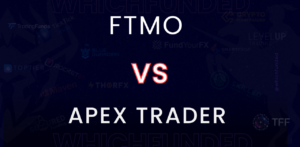When it comes to trading, understanding the bid price is crucial. Whether you’re a seasoned trader or just starting out, grasping the concept of bid price is essential for making informed decisions in the financial markets. In this article, we’ll delve into the definition of bid price and its significance in trading.
What is Bid Price?
The bid price, also known as the buying price, is the highest price that a buyer is willing to pay for a particular asset in the market. It represents the demand side of the market, as it reflects the price at which buyers are ready to enter a trade and acquire the asset.
For example, let’s consider the EUR/USD currency pair. If the bid price for EUR/USD is 1.0720, it means that buyers are willing to purchase one euro for 1.0720 US dollars. The bid price is always lower than the ask price, creating a bid-ask spread.
Understanding the Bid-Ask Spread
The bid-ask spread is the difference between the bid price and the ask price. It represents the transaction cost and serves as a source of profit for brokers. The bid price is typically lower than the ask price, and the size of the spread may vary depending on liquidity and market conditions.
Market makers play a significant role in determining bid prices. They continuously provide bid prices for various trading instruments based on their assessment of market demand. These bid prices are generally lower than ask prices, creating an opportunity for market participants to buy assets at a favorable price.
Factors Affecting Bid Price
Several factors influence the bid price in trading:
- Supply and Demand: If the demand for an asset exceeds the available supply, the bid price tends to increase. Conversely, if the supply surpasses the demand, the bid price may decrease.
- Liquidity: Assets with high liquidity tend to have narrower bid-ask spreads, making trading more cost-effective. On the other hand, assets with low liquidity may have wider spreads, resulting in higher trading costs.
- Market Conditions: Economic events, news releases, and overall market sentiment can impact bid prices. Positive news or improving market conditions may lead to higher bid prices, while negative news or deteriorating market conditions can drive bid prices down.
Using Bid Price in Trading
As a trader, the bid price is crucial for determining the optimal entry point for buying an asset. It provides insights into market sentiment and helps traders gauge the demand for a particular asset at a given price level.
When placing a market order to buy an asset, traders typically execute the order at the prevailing bid price. However, it’s important to note that limit or pending orders allow traders to specify their desired price, which may differ from the bid price.
Conclusion
Understanding the bid price is essential for successful trading. It represents the highest price that buyers are willing to pay for an asset and plays a significant role in determining the bid-ask spread. By considering the bid price alongside other market factors, traders can make informed decisions and navigate the financial markets more effectively.
Remember, staying updated with market conditions, practicing risk management, and conducting thorough research are key elements in utilizing the bid price to your advantage as a trader.








